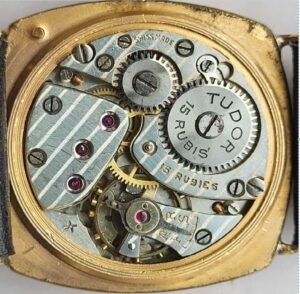Is my vintage watch overwound? As a vintage watch collector, I hear this question a lot from both new and experienced watch collectors. But here’s the thing, for as many times as I’ve been asked about overwinding, I’ve never seen a watch that was actually overwound. It’s simply not possible, if a watch is fully wound and not working, a the watch needs servicing.
Debunking the myth of overwinding
“Overwound” is one of those terms almost everyone has heard, whether they’re into watches or not. But here’s the kicker: despite its popularity, overwinding is more of a myth than a real issue. As watch enthusiasts, we get this question all the time: “Is my vintage watch overwound?” And yet, in all our years of collecting, we’ve never seen a watch that’s truly overwound.
So, what’s going on here? Let’s break it down and clear up the confusion about what overwinding really means, and what’s probably happening if your watch won’t run.
What does overwinding actually mean?
Overwinding is pretty much what it sounds like: winding a watch beyond its natural stopping point, which could potentially damage the mainspring or winding mechanism. This issue is specific to manually wound watches. Automatic watches, on the other hand, are designed with clever mechanisms to prevent overwinding entirely.
That said, when someone describes their vintage watch as “overwound,” they really mean that it’s fully wound but not running. And while it feels like something has gone terribly wrong, the problem isn’t with the winding itself; it’s something else entirely. According to David Boettcher at Vintage Watchstraps, the reason a fully wound watch won’t run is that something is mechanically wrong with it.
Understanding how mainsprings work
To get why overwinding is so rare, we need to talk about mainsprings. In a manually wound watch, the mainspring is housed in a barrel and anchored securely by a hook. When you wind the crown, the mainspring coils tighter and tighter, storing energy until it’s fully wound. Once it reaches maximum tension, it simply stops, you can’t wind it further without applying excessive force and risking damage.
If your vintage watch isn’t running after it’s fully wound, it’s not because the spring is overwound. It’s likely that the movement is dirty, dried out, or otherwise in need of service. A healthy mainspring has enough power to drive the escapement and keep the watch running smoothly. If it doesn’t, there’s something else going on (The mainspring at Hodinkee).
Can you overwind an automatic watch?
Automatic watches are even less likely to suffer from overwinding. Why? Because they’re built with a slipping mainspring mechanism. Once the mainspring reaches its full tension, the outer coil slips within the barrel, dissipating any excess winding energy without straining the movement.
You could sit there winding an automatic watch all day, and nothing would break. If you listen closely, you might even hear the mainspring slipping, a faint clicking sound as the mechanism does its job. It’s a smart system that ensures automatic watches are virtually overwind-proof (Automatic watches FAQ at Prestige Time).
How to tell if a watch is “overwound”
If you’re still worried about overwinding your manual watch, here’s a simple test: wind it until the crown naturally stops. At that point, the watch is fully wound, and you should stop too. Forcing the crown beyond this point can indeed cause damage, like breaking the mainspring or damaging the gear train.
Here’s what happens if you really do overwind:
• Broken Mainspring: The watch will wind endlessly without resistance, but it won’t run.
• Damage to the Gear Train: The crown might feel rough or skippy, or it could come loose entirely.
If your fully wound watch doesn’t run but the crown feels normal, overwinding isn’t the problem. Instead, it’s time for a service. A good cleaning and lubrication will likely get things back in working order (Overwinding at WahaWatches).
What to do when a watch stops running
If your manual watch doesn’t run after winding, don’t panic. It’s not your fault, and it’s not a sign you’ve damaged anything. Vintage watches, especially, often need routine servicing to keep their movements running smoothly. Dirt, dried oil, or worn components can stop the escapement from functioning properly, even if the mainspring is fully powered.
For automatic watches, the same rule applies. A fully wound automatic that doesn’t run probably needs a service, not a repair for overwinding.
A final word on overwinding
At the end of the day, overwinding isn’t the big bad wolf of the watch world that some people think it is. Manual watches will let you know when to stop winding, just listen to them. And automatics? They’re built to handle endless winding without breaking.
If your watch doesn’t run after being fully wound, don’t blame yourself or the mainspring. It’s just time for a service from a professional watchmaker. Keep your watches serviced, treat them with care, and enjoy wearing your vintage watch.
Related content
Mainspring at Wikipedia


Leave a Reply